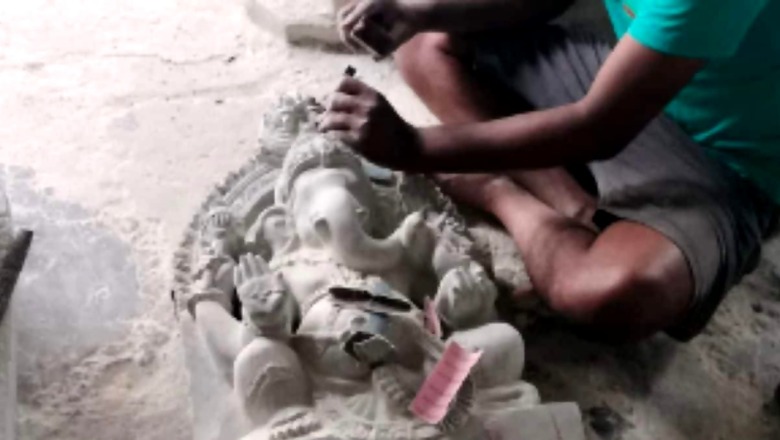
views
High-quality stones are essential for carving idols, and one particularly significant type is the Shila stone. This black stone holds a special place in religious idol-making, as it was used to carve the idol of Ramalalla in Ayodhya. So, what makes shila stone so unique?
Shila stone is found in specific regions like Mysore and Hassan, and it is a truly remarkable material. Not only is it visually striking, but it also possesses unique properties. Embedded deep within the earth, this stone can adapt to any climate, ensuring that idols carved from it can last for over a thousand years. Known as both black stone, it is primarily used for crafting single-stone idols.
One of its distinctive features is its icy cold feel when extracted from the ground, due to its fusion with groundwater. Its chemical composition makes it resistant to acids, extreme heat, and harsh weather conditions. Additionally, when anointed with milk during religious rituals, the stone remains unaffected, allowing the milk to be safely consumed as prasadam without any adverse effects on digestion. This durability and adaptability make Shila stone a favoured choice for religious idols, cherished for its beauty and lasting nature.
It is also known as Shaligram or Shaligrama Shila. It is a fossilised stone or ammonite collected from the riverbed or banks of the Kali Gandaki, a tributary of the Gandaki in Nepal. The Kali Gandaki flows through sacred places such as Muktinath and Damodar Kunda, which adds to the spiritual significance of these Shaligrams. In Hinduism, he is also considered a form of Vishnu.
Historically, the use of Shaligrama Shilas in worship can be traced back to the time of Adi Shankara through his works. In particular, his commentary on verse 1.6.1 of the Taittiriya Upanishad and his commentary on verse 1.3.14 of the Brahma Sutras suggest that the use of shaligrama shila in the worship of Vishnu was a well-known Hindu practice. Also, a large number of false shaligrama shilas continue to circulate.














Comments
0 comment